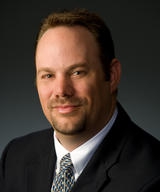Editor: What are the current issues you face as e-discovery process and technology experts?
Kiersted: We are seeing more and more e-discovery projects that involve vast data volumes. Our challenge is to handle the technical aspects of dealing with that data and, therefore, enable customers to focus on the important legal and strategic aspects of the litigation or matter at hand.
Guilbeau: Today’s cases are three to four times bigger than they were just five years ago. The average case we currently handle involves approximately half a million documents, and projects often reach tens of millions. Thus, time has become a major issue in today’s environment.
Now, let me say first that our most important goal at Kiersted Systems is efficiency, which permeates everything we do. As technology experts, our job is to help clients get more done in less time by providing tools that are specifically geared for that purpose. Certainly, our tools enable clients to employ simple techniques, such as batching documents based on email threading and similarity (near dupe), to serve the technical purpose of expediting the review process. But the real trick is to achieve this result with accuracy, skill and absolutely no wasted time – getting the most output from the least amount of input – and this goal embodies our concept of efficiency.
Editor: Clearly, staying ahead of the data-volume curve in your product development efforts involves meeting client expectations. Do courts have their own opinions on these technical issues?
Kiersted: Naturally, the courts are focused more on legal and procedural matters than on technical processes, and clients often tell us about the challenges they face in communicating their need for reasonable discovery expectations and timeframes. Notwithstanding today’s challenges, and perhaps a less-than-optimal understanding of the technical issues, courts have always run under tight schedules and simply have to set aggressive deadlines.
Again, our job is to help. For example, with tools like Kiersted Direct, clients can perform a quick analysis and gain early-stage insight into the data parameters of their matters, at which point they can communicate intelligently with the court and make concrete and reasonable suggestions. The value of such capabilities is borne out in feedback from government enforcement agencies that support the idea of educating the courts on technical issues and, in the process, saving time and money.
Guilbeau: Further, there is an important difference between “staying ahead” and “getting ahead of yourself,” again pointing to the value of early-stage access to the magnitude and substance of your data. As aptly phrased in recent rules changes issued by the Delaware Court of Chancery: “As with many discovery issues, a goose and gander discussion often helps parties reach a reasonable balance fitting to the particular case.” Attorneys and clients face huge challenges not only in handling an individual case from one side but also in setting discovery expectations that may, in turn, be imposed back on them by opposing counsel. A tool like Kiersted Direct can provide exactly the right insights to enable parties to understand the real implications of agreeing to the quantities, cost and schedules associated with the review and production phases.
Editor: We understand you handled the discovery aspects of a multi-billion-dollar environmental litigation matter for an oil and gas company. What challenges do you face in these projects?
Guilbeau: This case, among others we have handled, highlights the importance of timing and deadlines – and therefore of efficiency – as well as the need to establish goals and expectations at early stages. Time-related issues represent the greatest challenge in our industry, followed by poor deliverables as a second category, so our systems architecture is designed with speed and precision well in mind – resulting in excellent success rates.
Being headquartered in Houston, we have worked with many oil and gas companies. In large matters, such as the one you mentioned, clients consistently ask us: How are you going to meet our timelines? What surprises can we expect? How do we know the final deliverable is solid? We answer those questions by hiring and maintaining top talent in project management and in technical analysis and development, and then by building rigorous checks and balances into our system.
On a regular basis, we receive productions from opposing counsel that are incredibly problematic, such as poorly configured load files or missing files or images. Kiersted delivers tremendous value in taking data from disparate sources and making it useful to clients, such as we did for our oil and gas client. We apply specific expertise in resolving production issues before clients are knee deep in review.
Kiersted: And I should mention that the business outcomes we can achieve are substantial. The oil and gas case you mentioned involved taking data that was already hosted and bringing it into our systems for more efficient hosting and processing, reducing the client’s monthly costs by 80 percent.
Editor: Tell us how you meet concurrent needs for speed and accuracy.
Kiersted: Meeting these needs is inextricably tied to our client-first attitude and the impressive talent we bring to the table. Communication is the single most important factor for us. It starts with discussions about the case history and the technical underpinnings of what we do; however, handling a complicated matter really depends on providing talented project managers to conduct regular calls, develop custom workflows and handle the project management.
Guilbeau: And this involves more than systems knowledge; it extends into the review stage, process management and e-discovery expertise as a whole. And we stay engaged with projects by monitoring speed/accuracy, setting realistic goals and introducing tools or techniques as they are needed.
Generally speaking, the natural effect of greater speed is lower accuracy. Our job is to combat this dynamic, and we accomplish that first by purchasing state-of-the-art hardware that is battle tested. Greater up-time equals greater capacity, and our armada of processing machines can run autonomously and features automated processing capabilities. In short, they are always looking for work, and our proven input/export processes yield rock-solid results.
One of my favorite client quotes is "There's never enough time to do it right, but there's always enough time to do it twice." Kiersted Systems gets it right.
Editor: It sounds like client education plays an important role in your work.
Guilbeau: Yes. Clients often ask for the impossible in one day, and we have to tell them honestly what a more realistic expectation may be under the circumstances. An important aspect of education involves a common misperception that the e-discovery industry has developed to the point of being commoditized – that everything about e-discovery has been figured out, and it’s simply a matter of delivering data and having it crunched according to a magic, pre-set procedure. While it’s true that processing capacity and speed are better and faster than ever, the service we offer is anything but standard-issue. We spend a lot of time educating clients on the realities of what it takes to process a terabyte of data and all of the hidden “gotchas” in the process.
Kiersted: In broader terms, clients rely on our experience and input with complex matters and on the relationships we forge in helping them see around corners and look two or three steps down the line, all before making decisions that might otherwise focus only on what’s currently in front of them. This reaches beyond education toward playing a vital role in successful outcomes, and it inspires a level of client trust and loyalty that finds us finishing our 800th project for one client and handling hundreds of cases for other clients on a regular basis.
Editor: What are some specific capabilities you offer that deliver cost benefits?
Guilbeau: We target the most expensive aspects of the process, for instance, with capabilities that offer better filtering on the front end or increased review throughput. We know that the review process is very expensive, so we focus on creating solutions that specifically reduce these costs, such as by offering culling techniques that can be used for a current project and then seamlessly applied to future projects.
To that end, we developed Kiersted Direct, which I briefly mentioned above as our tool for early case assessment and data culling. It enables law-firm and corporate clients to start culling their data early and efficiently, and as I mentioned, it can be a powerful ally in efforts to educate and settle discovery terms with the courts and opposing counsel. Importantly, its key feature is simplicity. One trend we’re seeing in the e-discovery market is that new products, software, systems and processes are becoming more complex, with a million buttons that do a million things; thus, the user experience becomes overwhelming very quickly.
With Kiersted Direct, we took a step back, looked at the essential tasks our clients need to accomplish in order to be successful, and then targeted our efforts toward building a system that offered instant access to data and documents. Clients can jump right in, start culling down that universe of data, and immediately see the next-stage benefits of limiting the review process, which everyone agrees is the major cost point – often representing 60-80 percent of total litigation expenses. Kiersted Direct focuses on this cost-reduction goal by offering powerful, efficient and client-driven searching capabilities plus value-added analytics that enable users to make good decisions and cull intelligently. Culled data sets will of necessity take less time to review.
Also, Kiersted True Review, which is a review management suite built directly inside our hosted Relativity platform, tracks the activity and productivity of individual reviewers and offers unparalleled tracking capabilities and process efficiency. Clients are given instant access to vital information, such as each individual's hourly review rate, productivity and accuracy. Clients tell us it’s not enough to manage a global process; they also want to be confident that their 50 reviewers, as evaluated individually, are doing the job they’re being paid to do. So we developed these and other tools, such as coding validation, to tackle the efficiency problem from both sides: on the front end with Kiersted Direct and on the back end, through the review stage, with Kiersted True Review.
Editor: George, please tell us more about partnering with your clients. It seems that these relationships ensure that your services remain on the cutting edge.
Kiersted: Kiersted Systems got involved in these issues before “e-discovery” existed as a concept, and Andre and I have been honing our process in collaboration with our clients ever since. Of course, everything we do revolves around efficiency, which pertains to managing data volumes as well as time schedules, deadlines and costs. And it turns out that efficient use of technology can greatly reduce overall project costs, including and especially the most expensive human component.
Our partnerships with clients are central to this process, and we clearly understand that the tools we offer are consumed by clients with a specific purpose in mind. Their needs and ongoing communication with us drives product development and the constant refinement of services that require the human touch. The technology and tools we offer are delivered in this spirit, but the real partnership comes into play when those tools are deployed and our people get involved in the substantive work for real matters, notably during the review stage, to ensure that the process is both working well and monitored effectively. It’s all about dialogue with our customers.
Published April 22, 2013.




